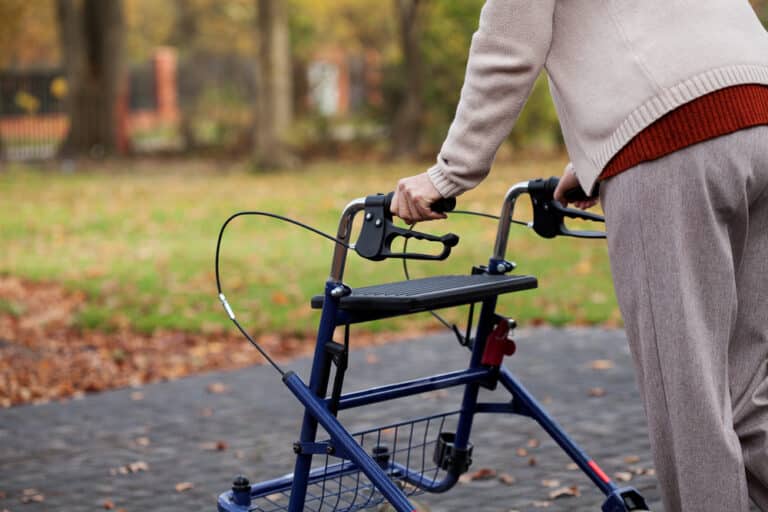Our bodies go through a myriad of changes. Of course, as we age, “changes” is a kind way of saying “problems”. For most of us, walking is something we often take for granted. However, it can become quite a challenge in our later years. Senior citizens face a wide range of issues that make walk independently pretty difficult. What are the top challenges that make walking difficult for the elderly?
Reduced muscle mass and strength.
It should come as no surprise that muscle mass and strength tend to decrease with age. Of course, this can lead to instability and balance issues. Reduced muscle strength in the legs makes it challenging for seniors to support their body weight and maintain balance while walking. Resistance training and exercises specifically targeting the lower body can help counteract this issue and improve mobility.
“Researchers estimate that, generally, those between ages 60 and 70 have lost 12 percent of their muscle mass, with those over 80 having lost 30 percent,” reports Roger Fielding of Tufts University, “One study of older adults showed walking and low-intensity strength training reduced the risk of major mobility disability when compared with a health education control group over the course of two years.”
Nerve damage and cardiovascular issues.
Peripheral neuropathy refers to when the nerves that are located outside of the brain and spinal cord are damaged. This condition often causes weakness, numbness and pain, impacting an elderly person’s ability to sense their feet. Nerve damage makes it difficult to detect uneven terrain or obstacles while walking. Proper management of underlying causes, such as diabetes, is crucial for maintaining mobility and independence.
Heart and other circulatory problems can lead to reduced stamina and endurance. This makes it challenging for seniors to walk long distances. Conditions like congestive heart failure can cause shortness of breath and fatigue during physical activity. Medication management and regular exercise under medical supervision are keys to improving cardiovascular health and promoting walking independence.
Polypharmacy.
As explained by ScienceDaily.com, “polypharmacy” is the term used to describe the act of taking several different medications. We’re talking about five or more. “Taking multiple medications also can be linked to problems such as falls, frailty, disability, and even death,” warns the website, “Polypharmacy also is a problem for older adults due to side effects or interactions resulting from the use of different medications.”
Osteoporosis and arthritis.
Osteoporosis is a bone disease that develops when bone mineral density and bone mass decreases. It makes older adults more susceptible to bone fractures. Seniors with osteoporosis are often afraid of falling and may become less active. This only exacerbates the problem. Bone-strengthening exercises, supplements and regular check-ups are vital for reducing fracture risk and maintaining walking independence.
Arthritis refers to more than 100 conditions of inflammation or swelling impacting joints, tissues around the joint and other connective tissues. A common ailment among seniors, it is known to cause severe joint pain and stiffness. The knees and hips are often the most affected and this makes each step a painful endeavour. Seniors with arthritis may require assistive devices like canes or walkers to maintain mobility and reduce the risk of falls.
To learn all about the wheeled walkers and rollators offered by LifeCare Mobility Solutions, please don’t hesitate to call us at 416-267-9800 or email us at info@lifecaremobility.ca. You may also contact us by filling out the form on our Contact page!










